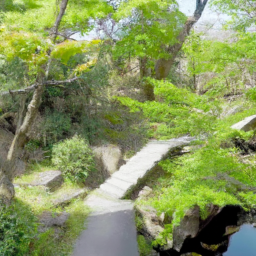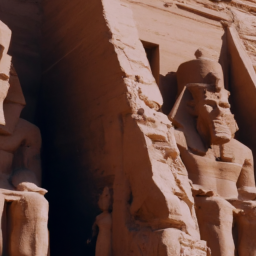“Experience the World’s Largest Salt Flat – Salar de Uyuni!”
Introduction
Salar de Uyuni is a salt flat located in the Potosí and Oruro departments of southwest Bolivia. It is the world’s largest salt flat, covering an area of 10,582 square kilometers (4,086 sq mi). It is located at an elevation of 3,656 meters (11,995 ft) above sea level. The Salar was formed as a result of transformations between several prehistoric lakes. It is covered by a few meters of salt crust, which has an extraordinary flatness with the average altitude variations within one meter over the entire area of the Salar. The crust serves as a source of salt and covers a pool of brine, which is exceptionally rich in lithium. It contains 50 to 70% of the world’s lithium reserves, which is in the process of being extracted. The large area, clear skies, and exceptional flatness of the surface make the Salar an ideal object for calibrating the altimeters of the Earth observation satellites. Salar de Uyuni is also a major tourist destination, drawing visitors from around the world to see its otherworldly landscape.
Exploring the Unique Landscape of Salar de Uyuni: A Guide to the World’s Largest Salt Flat
Salar de Uyuni is a unique and awe-inspiring landscape located in the southwest of Bolivia. It is the world’s largest salt flat, covering an area of over 10,000 square kilometers. This vast expanse of salt is a remarkable sight to behold, and a visit to this remarkable place is an unforgettable experience.
The salt flat is composed of several layers of salt and other minerals, which have been deposited over thousands of years. The salt is so thick that it can be walked on, and the flat surface makes it an ideal place for photography. During the wet season, the salt flat is covered with a thin layer of water, creating a stunning mirror effect.
The salt flat is home to a variety of wildlife, including flamingos, vicuñas, and other birds. The area is also home to several species of cacti, which are adapted to the harsh environment.
The salt flat is also a popular destination for tourists. Visitors can take a tour of the salt flat, which includes stops at various points of interest. These include the Train Cemetery, a collection of abandoned trains, and the Isla Incahuasi, an island made of coral and rock formations.
Visitors can also take a jeep tour of the salt flat, which allows them to explore the area in greater depth. The jeep tour includes stops at various points of interest, such as the Ojos de Salar, a series of salt-filled pools, and the Salar de Uyuni Museum, which houses a collection of artifacts from the area.
Salar de Uyuni is a unique and remarkable landscape that is well worth a visit. With its stunning scenery, diverse wildlife, and fascinating history, it is an unforgettable experience that will stay with you for a lifetime.
The History and Geology of Salar de Uyuni: How the World’s Largest Salt Flat Was Formed

Salar de Uyuni is the world’s largest salt flat, located in the southwestern region of Bolivia. It is an expansive, white-hued landscape that stretches for over 10,000 square kilometers, making it the largest salt flat in the world. The area is also home to a number of unique geological features, including the world’s largest salt lake, Laguna Colorada, and the world’s largest cactus forest, El Desierto de Dali.
The formation of Salar de Uyuni began millions of years ago, when the area was part of a large lake known as Lago Minchin. Over time, the lake dried up, leaving behind a thick layer of salt and other minerals. As the lake evaporated, the salt and other minerals were left behind, forming a thick layer of sedimentary rock.
The salt flat is composed of several layers of sedimentary rock, including gypsum, halite, and anhydrite. These layers are the result of the evaporation of the lake, as well as the accumulation of minerals from the surrounding mountains. The salt flat is also home to a number of unique geological features, such as the world’s largest salt lake, Laguna Colorada, and the world’s largest cactus forest, El Desierto de Dali.
Today, Salar de Uyuni is a popular tourist destination, attracting visitors from all over the world. The area is home to a number of unique attractions, including the world’s largest salt lake, Laguna Colorada, and the world’s largest cactus forest, El Desierto de Dali. The area is also home to a number of unique geological features, such as the world’s largest salt flat, Salar de Uyuni.
The formation of Salar de Uyuni is a testament to the power of nature and the forces of erosion. The area is a unique and fascinating landscape, and its formation is a reminder of the power of nature and the forces of erosion.
The Wildlife of Salar de Uyuni: A Look at the Unique Species Found in the World’s Largest Salt Flat
Salar de Uyuni, located in the southwestern region of Bolivia, is the world’s largest salt flat. It is a unique and fascinating environment, home to a variety of wildlife species that have adapted to the harsh conditions of the area. This article will provide an overview of the wildlife found in Salar de Uyuni, highlighting the unique characteristics of the species that inhabit this remarkable landscape.
The most iconic species of Salar de Uyuni is the Andean flamingo. This species is found in large flocks, often numbering in the thousands, and is the only flamingo species found in the region. The Andean flamingo is well adapted to the salty environment, and feeds on the algae and brine shrimp found in the shallow waters of the salt flat.
The area is also home to a variety of other bird species, including the Andean goose, the Andean gull, and the Andean lapwing. These species are well adapted to the harsh conditions of the salt flat, and can be seen foraging for food in the shallow waters.
In addition to birds, Salar de Uyuni is home to a variety of mammals, including the vicuña, a species of wild llama. The vicuña is well adapted to the salty environment, and can be seen grazing on the sparse vegetation found in the area. Other mammals found in the area include the Andean fox, the Andean mountain cat, and the Andean mara.
The salt flat is also home to a variety of reptiles, including the Andean iguana and the Andean gecko. These species are well adapted to the harsh conditions of the salt flat, and can be seen basking in the sun on the warm rocks.
Finally, Salar de Uyuni is home to a variety of invertebrates, including the brine shrimp and the fairy shrimp. These species are well adapted to the salty environment, and can be seen in large numbers in the shallow waters of the salt flat.
In conclusion, Salar de Uyuni is home to a variety of unique wildlife species that have adapted to the harsh conditions of the area. From the iconic Andean flamingo to the Andean iguana, the wildlife of Salar de Uyuni is a fascinating example of adaptation and resilience in the face of extreme conditions.
Q&A
Q: Where is Salar de Uyuni located?
A: Salar de Uyuni is located in the southwest of Bolivia, near the crest of the Andes Mountains.
Q: What is Salar de Uyuni known for?
A: Salar de Uyuni is known for its vast salt flats, which are the largest in the world. It is also known for its unique landscape, which is often used as a backdrop for photography.
Q: What activities can be done at Salar de Uyuni?
A: Visitors to Salar de Uyuni can take part in a variety of activities, such as 4×4 tours, mountain biking, and trekking. There are also opportunities to visit nearby lagoons, geysers, and hot springs.
Conclusion
The Salar de Uyuni is an incredible natural wonder that is a must-see for anyone visiting Bolivia. Its vast expanse of salt flats, unique wildlife, and stunning landscapes make it a truly remarkable place to explore. From its unique geology to its rich cultural history, the Salar de Uyuni is a place of beauty and wonder that will leave visitors with a lasting impression.



